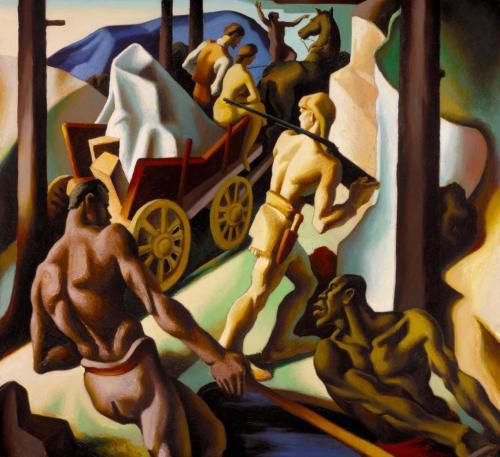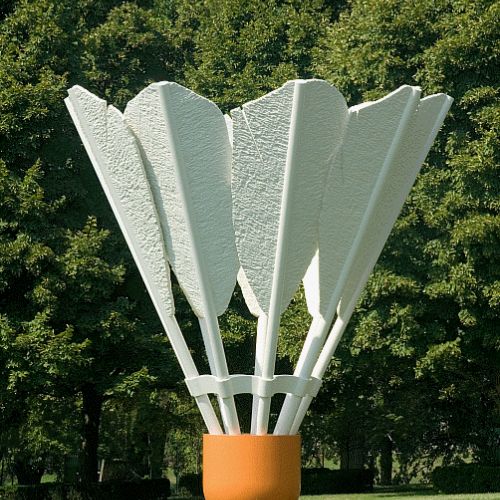
Over the Mountains
American Historical Epic Thomas Hart Benton initially conceived of American Historical Epic while serving in the Navy during World War I. He set to work on it soon after the end of the war, aspiring to create seventy-five panels illustrating American history from the arrival of European explorers to his own day. He abandoned the series in the winter of 1926, having grown tired of its historical subject matter. He had completed two “chapters,” including the ten panels on view here. Related panels are held by various public and private collections across the country. Benton was likely f irst exposed to mural painting at the Library of Congress in Washington, D.C., where he lived for nearly eight years as a child while his father served in the House of Representatives. This experience also sparked the aspiring artist’s interest in American history. His studies in Paris from 1908 to 1911 also provided exposure to public murals in the European tradition. In composing American Historical Epic, Benton rejected traditional mural painting. His series contains no classically inspired personifications of abstract concepts, such as “Truth” or “Progress,” or representations of specific great feats. Rather, it focuses on the shared experiences and struggles of groups of anonymous, ordinary individuals. Benton believed American history was often taught with too much emphasis placed on the actions and accomplishments of “great men.” Filled with undulating forms and vibrant color, the murals also look ahead to Benton’s signature style of painting, which gained widespread attention in the 1930s and ’40s. These five panels show the advance of settlers into the interior of the country and its consequences. The Pathfinder, ca. 1926 Over the Mountains, ca. 1924–26 Jesuit Missionaries, ca. 1924–26 Struggle for the Wilderness, ca. 1924–26 Lost Hunting Ground, ca. 1924–26 Bequest of Thomas Hart Benton, F75-21/6–10
Bequest of the artist
1927-28
Oil on canvas, mounted on aluminum honeycomb panel
168.3 x 182.9 cm
F75-21/7
Text © The Nelson-Atkins Museum of Art, 2018
Where you'll find this

Nelson-Atkins Museum of Art
Permanent collection













